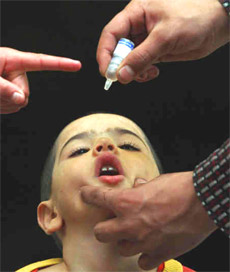fitness news
![]() ,
,![]()
Font size Women’s Health
Improving Maternal and Child Health in Afghanistan: A Study
– Reported, 18 January 2013
 For hundred of years, people in the region encompassed by the Afghanistan-Iran-Pakistan borders (AIP region) have been challenged by conflict and political and civil instability, mass displacement, human rights abuses, drought, and famine. It not surprising that health and quality of life of vulnerable groups in this region are among the worst in the world. In general, women and children, in particular girls, in the AIP region have had especially limited access to healthcare. Women and children have dramatically high rates of communicable and non-communicable disease, morbidity, and mortality and a general low life expectancy that is rapidly declining. In spite of national and international efforts to improve health status of vulnerable populations in this region, the key underlying sociocultural determinants of health and disparities (ie, gender, language, ethnicity, residential status, and socioeconomic status) have not been systematically studied, nor have their relationships to environmental challenges been examined.
For hundred of years, people in the region encompassed by the Afghanistan-Iran-Pakistan borders (AIP region) have been challenged by conflict and political and civil instability, mass displacement, human rights abuses, drought, and famine. It not surprising that health and quality of life of vulnerable groups in this region are among the worst in the world. In general, women and children, in particular girls, in the AIP region have had especially limited access to healthcare. Women and children have dramatically high rates of communicable and non-communicable disease, morbidity, and mortality and a general low life expectancy that is rapidly declining. In spite of national and international efforts to improve health status of vulnerable populations in this region, the key underlying sociocultural determinants of health and disparities (ie, gender, language, ethnicity, residential status, and socioeconomic status) have not been systematically studied, nor have their relationships to environmental challenges been examined.
Many of the customs and traditional practices rooted in the culture and religion have considerably influenced the health and quality of life of women and children and caused the considerable disparities related to health and social status between men and women and boys and girls in the region. Because of the similar cultural and religious practices among people in the AIP region, some studies indicate that in the long run, one of the best ways to reach and assist vulnerable populations, especially women and children, is through social, economic, and political empowerment of women in the border areas. There is a largely under-realized potential capability among women in the region to take charge of community activities, including environmental and health-related issues. In addition, female healthcare providers working in NGOs, such as Red Crescent Society (ARCS), and rural “health houses” have been identified by many investigators as a useful way to communicate and provide basic and health literacy in the region of interest. However, it seems the language-related problems will persist, unless the regional languages (ie, Baluchi or Dari) are used to develop basic education and health information materials.
Communities in the AIP region need programs to provide emergency relief, education for all, easy access to primary healthcare and social services, and empowering capacity. Although these programs are urgent, there is still a need to refocus local and international efforts to promote gender equality and long-term sustainable development and environmental improvements.
Establish and operate affordable primary and emergency healthcare services, accessible by vulnerable people, primarily women and children. This will minimize the burden of morbidity and mortality from both communicable and non-communicable diseases among marginalized populations.
Despite their extraordinary contributions to the health and well-being of the family, women living at the AIP borders face a variety of health-related problems that are not attended to or acknowledged by other family members. Their multiple responsibilities at home, their social isolation and lack of support at home and in the community, and their lack of decision-making power, lack of access to education, and lack of access to adequate health services are among the highly prevalent sociocultural factors that can lead to physical decline and increased emotional and mental strain.
In conclusion, the people within the AIP borders need healthcare services and culturally appropriate awareness campaigns to improve women’s and children’s health, as well as programs to help children, especially young girls, find new opportunities for education. More research is needed to determine and measure the impact of underlying cultural factors that can be modified to promote the empowerment of women and facilitate sustainable changes needed to support health.
CREDITS:
Iraj M Poureslami, PhD, David R MacLean, MD, Jerry Spiegel, PhD, and Annalee Yassi, MD
http://www.ncbi.nlm.nih.gov/